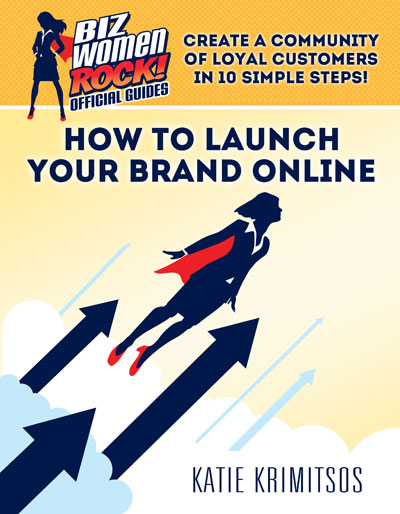
How to Optimize Your Site for Every Stage of the Buying Cycle
By Neil Patel
If you’ve been in marketing for a while, you’ll eventually discover a harsh reality.
You can’t force people to buy from you.
No matter how sexy your site or how awesome your conversion methods, you can’t automatically turn an unwilling customer into an eager spender.
Why not? It’s explained by something called the customer buying cycle. To understand the buying cycle to its fullest, you must also understand your customers. You can find out why they didn’t buy, what might make them buy, and why they might come back to buy in the future.
My goal in this article is to show you how you can optimize your site for every stage of the customer buying cycle. Even though you can’t make a customer buy, you can at least know how your site can meet the specific need that the customer has at any given point in the buying cycle.
What is the Buying Cycle?
The buying cycle is the process that every customer goes through when they purchase an item.
It looks like this:
It’s described as a cycle, because it tends to be repetitive. You can also look at it as a linear process.
There are hundreds of versions of the cycle. The specific cycle depends in large part on the specific product that you are selling.
The broad truths to keep in mind regarding the buying cycle are as follows:
- Every customer goes through some process of consideration, realization, and conversion.
- The customer can only be in one spot of the cycle at a time, for any one need.
- The success level that you achieve when marketing to that customer depends on where he or she is in the buying cycle.
And that’s where we come back to the harsh truth: About only 3% of the people who visit your site are going to buy your product. In fact, you’re generally doing well if you can get more than 3%.
What’s happening with the other 97%?
They’re leaving, choosing not to buy, going away.
Anyone who didn’t convert is at some other phase in the buying cycle. They might not ever convert. They might convert someday.
You need a marketing strategy that is actively targeting the vast percentage of your website visitors. I’m not talking about individual conversion methods here. I’m talking about broad content tactics that move any visitor closer to a conversion — to the next best phase in the buying cycle.
Your goal is, of course, more conversions. But to think of it more broadly, your goal is simply to move the customer to the next phase in the buying cycle.
Let’s talk about how to do that.
Phase 1: Conception: The Customer Realizes a Need
Customer Question: What is my need?
In this phase, the customer is trying to figure out what exactly they need. They have no focused questions yet, only a vague awareness that they have a need.
Your Marketing Move: Describe the problem
Before opening up your marketing methods, make sure you understand all you can about your customers’ needs. Some businesses may perform a “customer needs analysis” to try to hone in on the problem.
Your content marketing is one of the best places to focus your strategy. At this phase in the buying cycle, customers want information (i.e., “informational query”).
To gain traffic from these informational queries, construct a content marketing approach that focuses on problems and solutions. Some of the best blogs in the business are all about problems and solutions that the target audience needs.
Buffer, for example, publishes outstanding long form content focused on the types of solutions that their prospective customers need.
For example, Buffer recently published an article on Pinterest marketing mistakes. They know that their target audience is trying to figure out how to optimize their Pinterest social strategy. Since Buffer’s product is all about social sharing, they’ve got the kind of content that is going to attract the problem-centric queries that their audience is using.
The article starts with a problem, focuses on a solution, and leaves the customer with actionable steps to improve their Pinterest strategy.
Plus, as always, they include a CTA at the end of their blog post:
Most content marketers are challenged by trying to figure out what kind of content will engage their prospects.
If you filter your content marketing approach through the matrix of “needs and problems,” then you’ll have plenty of fodder for content.
Prospective customers will find you, engage with your content, and move on to phase 2.
Phase 2: Comparison: The Customer Explores Options for Meeting this Need
Customer Question: What is the best way to meet this need?
At this point, you’re not the only player in the game. The customer is scoping out alternative prospects. Other businesses know about content marketing, and how best to attract the solution-seeking customer.
The queries are still informational and solution-focused. Now that they know their problem, they are moving towards a solution.
Your Marketing Move: Options for Meeting the Need
Content is still going to play the lead role in your marketing approach for this phase of the buying cycle.
The same content that attract the prospects’ information queries in the first phase is going to be the same content that drives them to the consideration phase. Not only should your articles be problem-centric, but they should be solution-focused.
Make sure you’re trying to solve the issue beneath the issue.For example, your customer may be buying a bed, but what they want is a good night’s sleep.
Market to the core need of the customer, not just the specific widget they’re in the market for.
Phase 3: Consideration: The customer narrows down options, and makes a judgment about the best one
Customer Question: Which solution is the best for me?
Each of the three phases of the customer buying cycle so far have been fluid. A customer may move rapidly through each one, and your marketing move is pretty much the same — create solution-focused content.
Here is where the consideration process gets deeper. You’re dealing now with an informed customer. She knows the marketing, understands price points, is aware of the brands who can solve the problem, and realizes what she needs to do next.
You can finally forget about solutions. The customer is way beyond that phase.
Now, your customer wants to hear about features.
Your Marketing Move: Explain the features and benefits of your product
This is, by far, the biggest phase in the buying cycle. At this point, the customer is actively engaged on your site, interacting with your content, downloading your PDFs, and viewing your pricing. At this point, you can pull out all the optimization stops, unleash all the methods, and do everything in your power to get the customer to convert.
The questions that the customer is asking at this point have deepened and become more specific. She has answered the big what question, now she needs to answer other questions:
- How does this feature integrate with…?
- What are the terms on the guarantee?
- How easy is it for me to get in touch with support?
- Can I return the item?
- Is the team friendly, professional, competent?
- What are the shipping costs?
- What are the delivery times?
- How much storage space do I get?
- What if I don’t like it?
- Is there a warranty?
Your website’s evergreen and product pages are now the focus content. You’ve managed to earn organic traffic from the customer’s queries. Now, you need to earn their respect through comprehensive, detailed, powerful, and compelling descriptions, content, and information that is specific to your product.
I’m not merely referring to the way in which you create compelling and SEO-friendly ecommerce pages. I’m referring broadly to the way that you shape content on your site to explain everything possible about your content.
- Create content about each feature.
- Create content about your support.
- Create content about your warranty.
- Create content about your technical specifications.
- Create content about all the details of the product.
The more content, the better. The customer is actively seeking more information, more distinguishing features, more characteristics, and more aspects of the product.
If you have more information than the competition, then you possess a remarkable advantage. You will be able to nudge the customer out of phase 3, and into phase 4 — conversion.









Leave a Reply